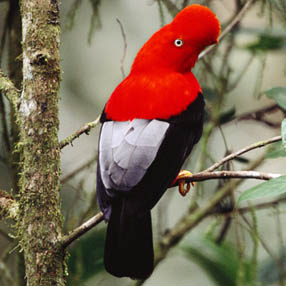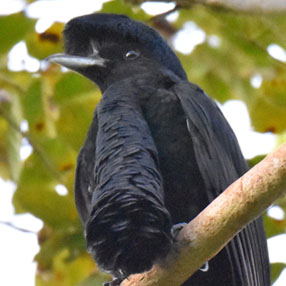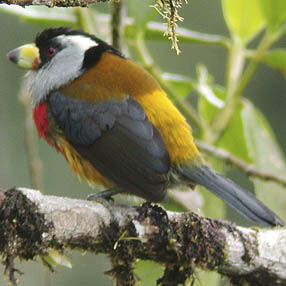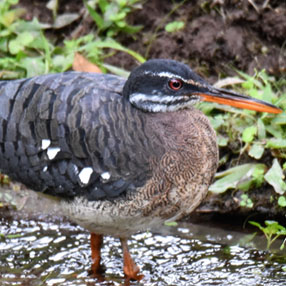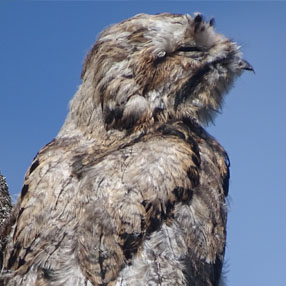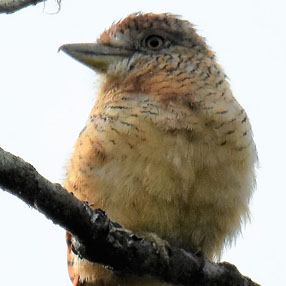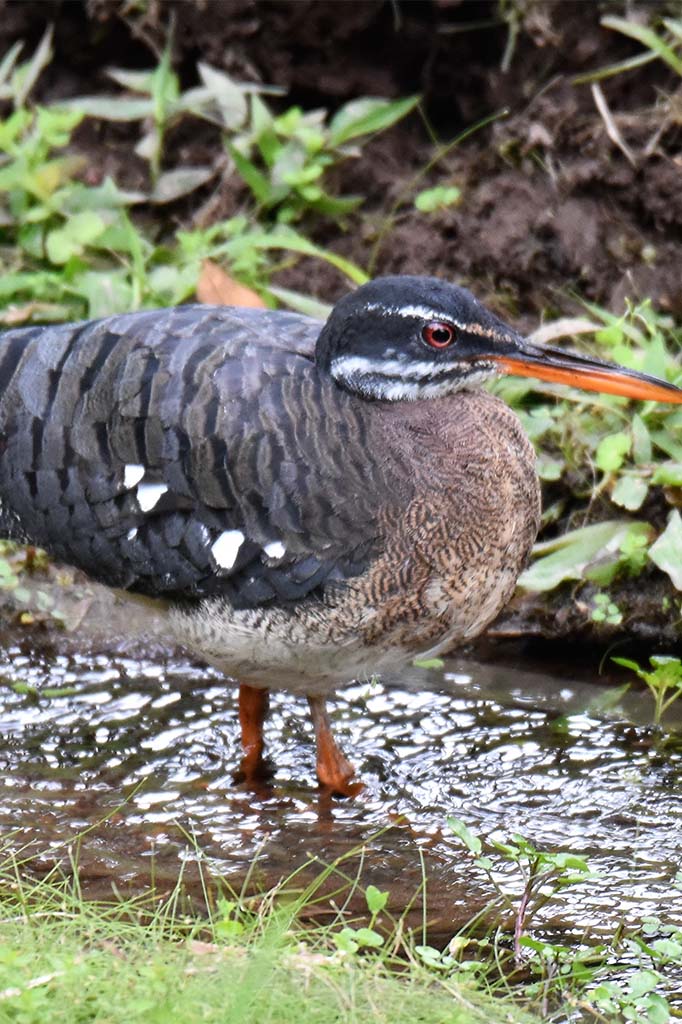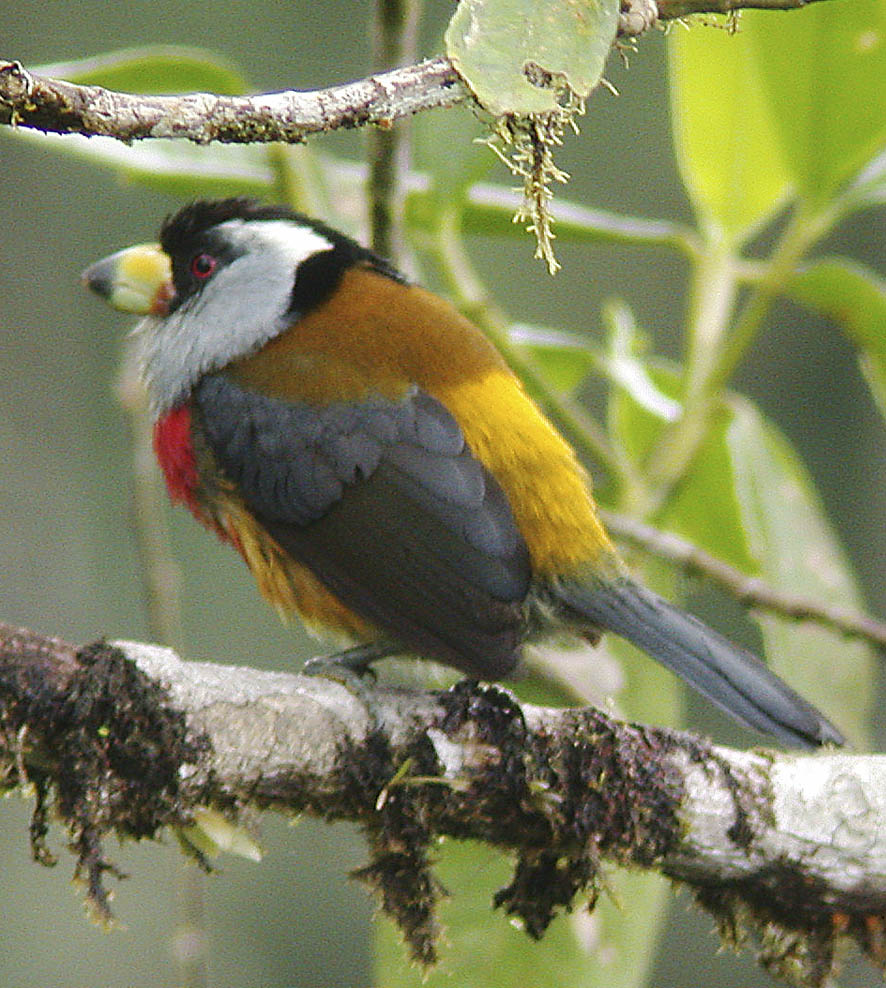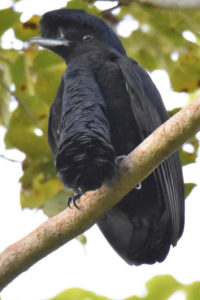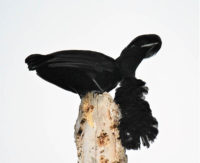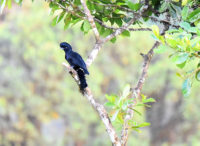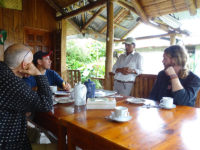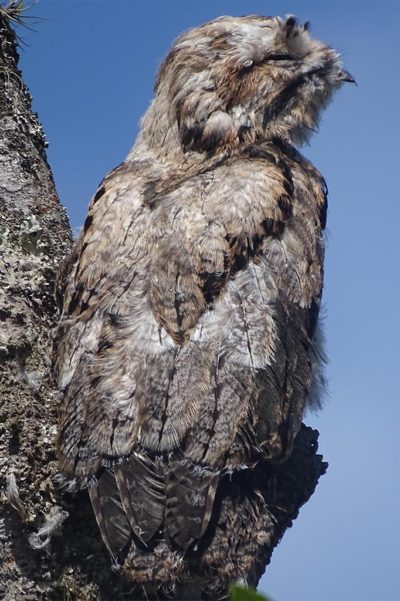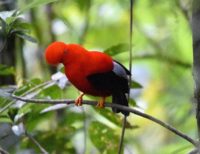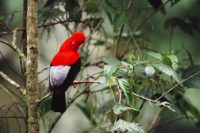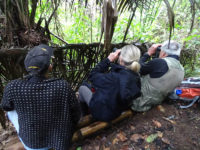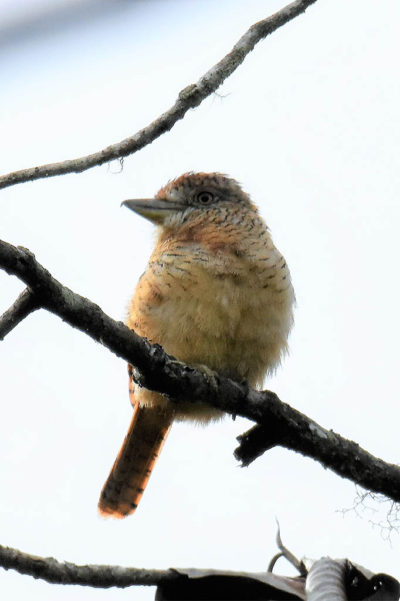Birding
![]()
EL MONTE SUSTAINABLE LODGE
Mindo is a town, a river and an area… actually the area is quite large and El Monte is located pretty much in the central part of this area, about 3 kilometers from the town of Mindo on the Rio Mindo on the western slope of the Andes. Due to the relative proximity to North America, Ecuador (Mindo included) is the wintering home of many temperate species. Also, at 1,300 meters above sea level we are at the mid-point elevation between the highland Quito area and the coast. Therefore we have birds that occasionally visit from the Coastal and from the Sierra region.
For these reasons (and others) over 400 species of birds have been seen just in the immediate area. Including areas that can be visited in day trips from the town of Mindo, there are an estimated 550 bird species. Birds that can be seen in the Mindo area include Andean Cock-of-the-Rock, Yellow-throated Toucan, Toucan Barbet, Giant Antpitta, Scaled Fruiteater, Club-Winged Manakin and Torrent Duck, among others.
Birding Areas In and Around Mindo
![]()
Estimated over 550 species of birds in the Mindo area including areas accessed by Day Trips!
There are many areas inside of Mindo or just outside that are best accessed by car. Transport can be arranged to the following areas…
We welcome and cater to the needs of birders of all levels. Our cable car entrance ensures us privacy and access to the old road that crosses the Mindo-Nambillo ridge that is one of the best areas for birding.
Other Wildlife
While mammal species are difficult to see, over time we have spotted on the El Monte reserve and have photos from our camera trap; Central American Agouti, Jaguarundi (small black cat), Red Brocket Deer, Paca, Tayra, Andean Coati, three-toed sloth, Ecuadorian Capuchin Monkey (critically endangered), Western Red Tailed Squirrel and Puma. There is also a high diversity of reptiles, amphibians, butterflies and other insects in Mindo.
- Something you can do as a couple. Other possibilities are Ball Room Dancing, Shuffle Board and Cribbage.
- You can bird in a group or alone. It´s a great social activity… birding with your local chapter of the Audubon Society, or you can get out there by yourself.
- It will take you all over the world. Whether you travel to bird or bird while you travel, birding can introduce you to some of the most beautiful places in the world, even including cities which are home to many interesting species.
- Gets you off your butt! Maybe birding isn´t a highly anaerobic activity but anyone who has been out there birding all day can tell you it does give you a workout.
- It provides important mental exercise. Ok was that the Superciliared Hemisphingus or the Oleagious Hemisphingus? And did we hear the Scale-Crested Pygmy Tyrant before or after the Dark-Backed Woodquail? If crossword puzzles can help you hold Alzheimer´s at bay, just think how good birding can be!
- Lower back stretches. Works to prevent that hunched over look that many of us inherit as we age. Ok, look straight up at that Purple Honeycreeper for 10 minutes, rest, repeat for 10 minutes, rest, repeat looking at that Tropic Kingbird, rest…
- Makes you aware of your surroundings. Ever try to sneak up on a birder? They´ll spot you in a minute… they don’t call us Twitcher´s for nothing! Actually they do, because the name came from Great Britain where the name Twitcher originated because birders would use sticks to rustle or “twitch” the underbrush to spook birds out to be able to see them.
- Audubon Christmas Bird Counts. These are great where you and your friends get out on a specified day in December or early January and count all the birds (species and individuals) you can find in 24 hours in a 24 kilometer radius. It´s a bit like Bingo or the Lottery and you always want to be the one that gets lucky and finds the rare species. It´s also great to compare your list to others in the count and from previous counts.
- Zen of Birding. It´s that magical feeling of being one with the universe… just you, your loved one, a pair of Nikon binos and a Hoary Puffleg Hummingbird right in front of you. Birding, and nature observation, helps you focus, calms your nerves and makes you a better person.
- Calling a birding friend and rubbing it in when you see a great bird and he doesn´t!!! “Hey Dusan, what have you been up to? Not much here, just Mariela and I went birding today and saw a WHITE BEARDED MANAKIN! Yep here in Mindo 500 meters elevation out of it´s range!” (I recognize that #9 and #10 are completely contradictory, maybe I should have ordered them differently)
Feeding AnimalsIt is astonishing to see the increase in the amount of wildlife feeding that has happened in the last few years. It 1st started with hummingbird feeders, then to fruit being fed to toucans, tanagers and other birds. But today some lodges are even putting out food for mammals, such as the newly described species called an Olinguito, as well as coati, kindajous, Tayra, monkeys etc. You might ask, “why is this such a bad thing?” Guests are able to see the bird or mammal up close and it makes it possible to take photographs. And does it really do any harm? Well we feel that it does… but unfortunately the research to back up this claim is scarce. Here is one article that I found giving reasons not to feed animals: 4 Reasons Why You Shouldn’t Feed the Birds (Or Any Animals). But apart from this it takes away from the true eco tourists joy of finding a bird or mammal in its natural environment and observing feeding, social or reproductive behavior. One of the often unspoken joys of any interaction in nature is to find the rare animal or observing an even common species exhibiting a rare or rarely seen behavior. If we spend all of our time at feeders than we all see the same thing and it diminishes our chances of seeing something truly unique.

